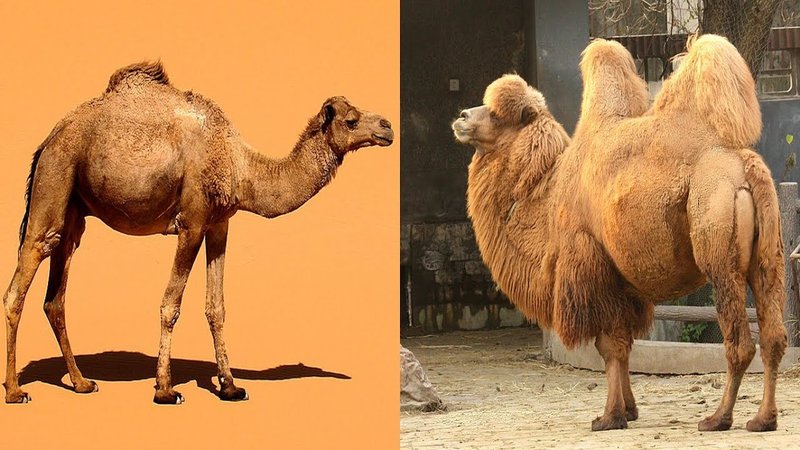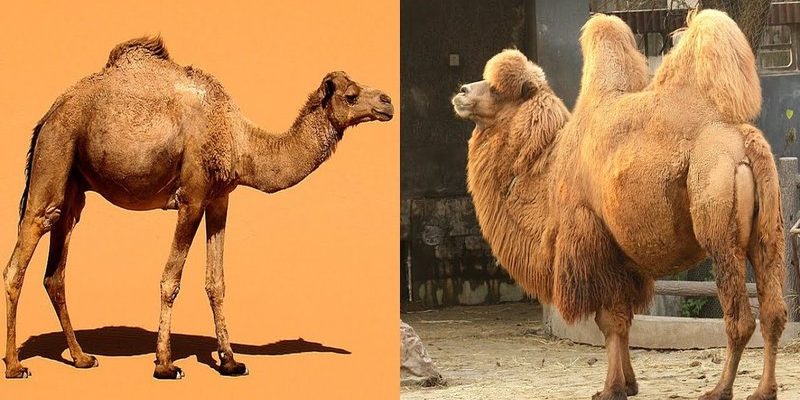
You might be wondering why we even need to compare these two breeds. Well, each camel has its specific traits and uses that are perfect for different settings. Whether you’re curious about their physical differences or their cultural significance, this guide will take you through everything you need to know. Think of it like a coffee chat where I break down the nuances of these fascinating creatures.
Physical Differences Between Dromedary and Bactrian Camels
When you first see a Dromedary camel, the first thing that catches your eye is that prominent single hump. This camel is built for desert life, relying on its hump as a reservoir of fat, which can be converted into energy when food is scarce. In contrast, the Bactrian camel, with its two humps, looks completely different. These humps store energy as well, but the Bactrian is adapted for colder climates, where it can withstand harsh weather conditions.
You might also notice the size difference. Generally, Dromedaries are taller and a bit slimmer, standing anywhere from 6 to 7 feet tall at the hump. Bactrians tend to be stockier and shorter, usually around 5.5 to 6.5 feet tall. Let’s not forget about their fur! Bactrian camels are covered in thick, shaggy hair, essential for insulation against the cold, while Dromedaries have shorter, smoother coats suitable for hot desert environments.
Another striking difference is their faces. Dromedaries have more elongated heads with narrower features, helping them to adapt to their arid surroundings. Bactrians, on the other hand, have broader faces and wider nostrils, which assist in filtering out dust and cold air. It’s these subtle differences that keep them uniquely suited to their habitats.
Habitat and Distribution
Dromedary camels primarily thrive in the arid deserts of the Middle East and North Africa. They are the “go-to” camels for many nomadic tribes who traverse these hot climates, primarily because they can withstand extreme heat and go without water for several days. You could almost think of them as the ultimate desert survivors, perfectly tailored for the dry, sandy landscapes.
Bactrian camels, however, call the cold, rugged steppes of Central Asia home—think Mongolia and northern China. Their thick fur and hardiness allow them to deal with frigid temperatures and sparse vegetation. If the Dromedary is the desert warrior, the Bactrian is the mountain-dwelling sentinel, equipped to face the challenges of an entirely different environment.
Interestingly, while Dromedaries outnumber Bactrians—about 90% of the world’s camel population consists of Dromedaries—Bactrians are quite rare and often considered a symbol of endurance against harsh conditions. So, even though they might not be as common, they hold a special place in the hearts of many cultures.
Uses of Dromedary Camels
Dromedary camels have a long history of being used for various purposes. Most notably, they’re fantastic for transportation. Their strong legs and resilience make them perfect for long journeys across the desert. Many nomads rely on Dromedaries for carrying goods and people, which greatly aids in trade between remote areas.
Besides transportation, these camels also provide milk, which is a staple in many desert cultures. The milk of a Dromedary is rich in nutrients and has a unique taste, often consumed fresh or turned into yogurt. You might be surprised to learn that it can even be used to make traditional cheese!
Furthermore, Dromedaries are crucial in tourism, especially in places like Morocco and Egypt, where camel rides attract people eager to experience the desert’s magic. You could say that these camels not only help people travel but also connect them to the nomadic lifestyle of the past.
Uses of Bactrian Camels
Bactrian camels are not just beautiful creatures; they’re also incredibly useful. For starters, they are often used as pack animals, especially in rugged terrains where vehicles would struggle to navigate. Their ability to carry heavy loads—often up to 1,000 pounds—makes them invaluable for transporting goods across mountainous regions.
In addition to being pack animals, Bactrians provide wool that is highly prized. Their soft, warm fur is sheared and spun into textiles, used for everything from clothing to blankets. If you ever get the chance to feel Bactrian wool, you’ll find it incredibly warm and cozy—perfect for colder climates!
Moreover, just like their Dromedary cousins, Bactrian camels produce milk, which is an important food source in Central Asian countries. Their milk is known for its health benefits and is often used to make a traditional fermented dairy drink called kumis. This drink not only nourishes but also holds cultural significance among the nomadic tribes of the region.
Behavior and Temperament
When it comes to behavior, Dromedary camels are generally more social and easier to train. They form strong bonds with humans and can become quite affectionate. You might even see them being used in various animal-assisted therapies due to their gentle nature. This makes them ideal for families and those new to handling camels.
Bactrian camels, on the other hand, can be a bit more stubborn. Their independent streak makes them tough to train, but once they establish a bond, they can be incredibly loyal. Imagine having a friend who’s a bit grumpy at first but turns out to be a steadfast companion. That’s the Bactrian for you!
Both species exhibit strong herd instincts. They thrive in groups, relying on one another for social interaction and protection. Whether it’s a Dromedary or a Bactrian, you’ll find that these camels have an intricate social structure that fascinates researchers and animal lovers alike.
In the end, both the Dromedary and Bactrian camels are remarkable creatures, each adapted for their unique environments and serving essential roles in human communities. Whether you’re drawn to the grace of the Dromedary or the rugged charm of the Bactrian, understanding their differences helps to appreciate their contributions to our world.
Next time you see a camel, take a moment to think about the journey that brought them to where they are today. From providing transportation to nourishing communities, these incredible animals are more than just desert dwellers—they are living links to ancient traditions and resilient cultural practices.

